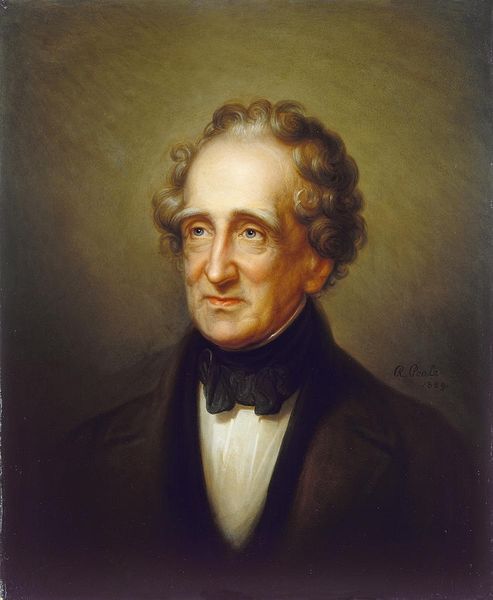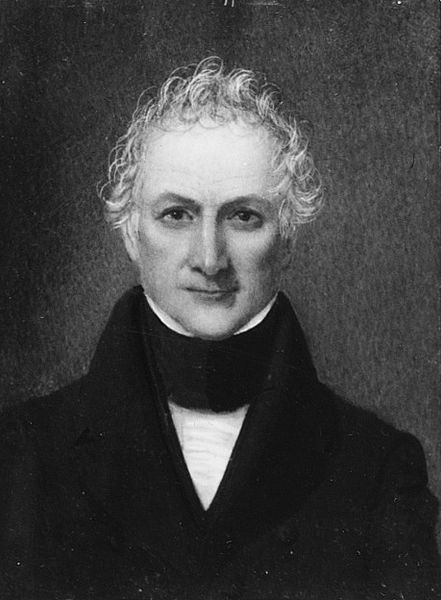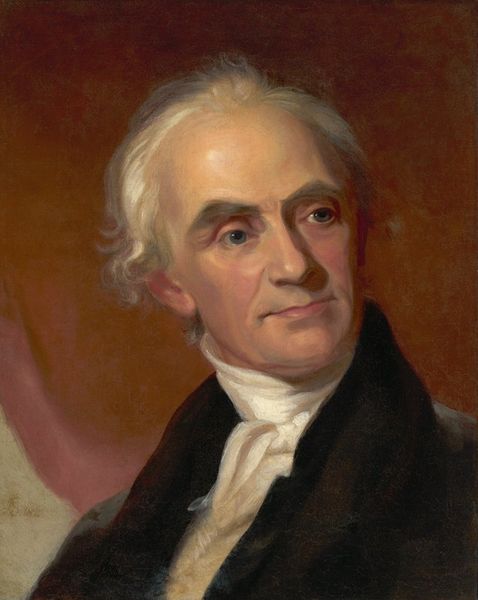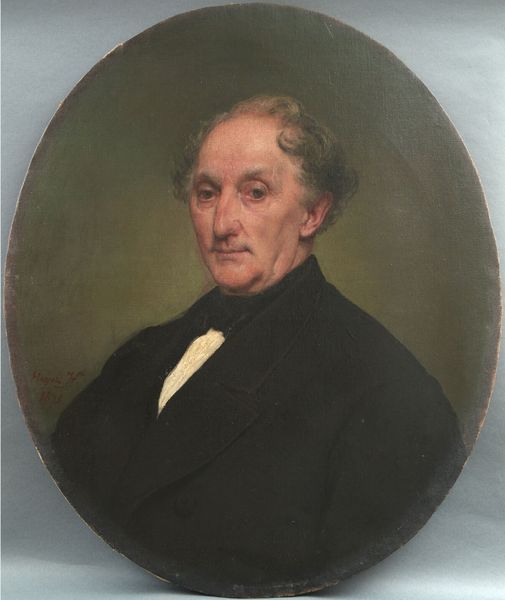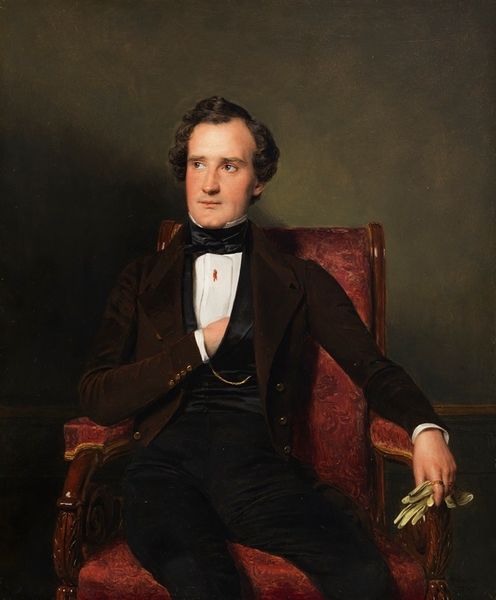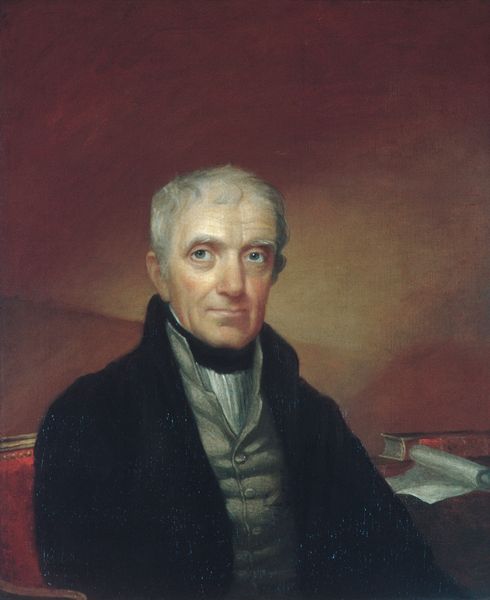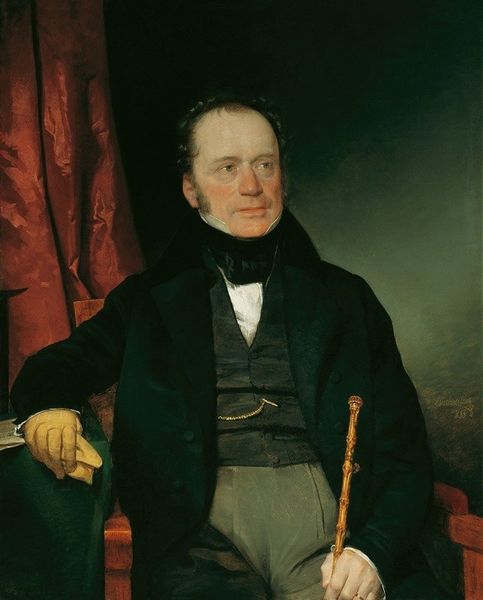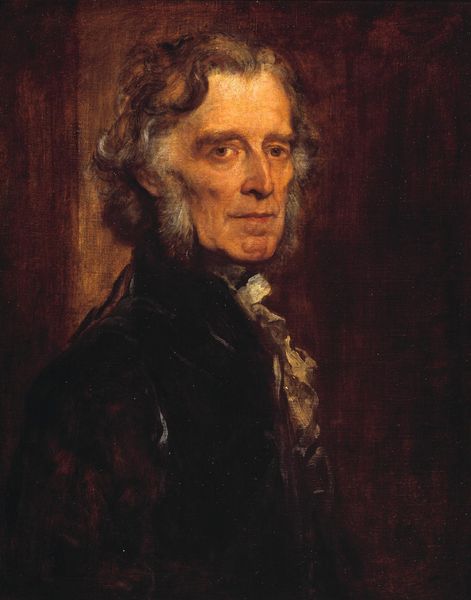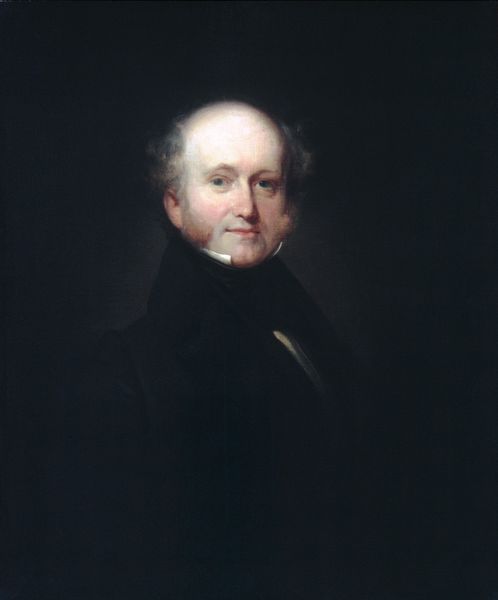
painting, oil-paint
#
portrait
#
self-portrait
#
portrait
#
painting
#
oil-paint
#
romanticism
#
academic-art
Copyright: Public Domain: Artvee
Curator: Painted in 1850, this oil on canvas is a self-portrait by Thomas Sully. Editor: My first impression is one of somber dignity; the artist presents himself with a thoughtful gaze and a restrained palette. Curator: Indeed. Note how Sully’s compositional choices guide our reading of the portrait. The formal wear indicates status. We find a stark juxtaposition in the rendering of his face – lined and worn, yet illuminated – framed against the dark attire and a crimson curtain which hints at theatricality. It seems that he almost performs for us the role of an aging artist. Editor: That curtain begs to be understood, though. What are we to make of it? The layering here speaks to me of process; Sully's handling of the oil paint – its textures and its blending. It hints at his active labor in depicting himself but does it also point to a deeper meaning? Could it symbolize the 'unveiling' of the artist? Curator: Possibly, but the Romantic era often uses such background elements decoratively, so an easy read may be presumptive. It is, nonetheless, in the chiaroscuro and fine details that we witness the height of academic training. Observe his meticulous study of light and shadow. These techniques, combined with soft lines, evoke the delicacy reminiscent of earlier masters, like Reynolds, which may also reference their elevated station within society. Editor: Considering it's a self-portrait, it seems significant that he would choose to depict himself in a specific socio-economic and historical context, embedded within the materials and conventions of portraiture, thus signaling the means and conditions of representation itself. The question emerges, did he want his work and legacy preserved as ‘high art’, regardless of what such preservation may require? Curator: The self-conscious gesture may, precisely, demonstrate that Sully was well aware of the act of preservation—both artistic and personal. Through line, color, and light he invites the viewer into his inner sphere; however artfully curated, there remains an element of honest engagement. Editor: Absolutely, the textures themselves speak, don’t they? Paint application shows both mastery and deliberate artistic effort which subtly engages in a dialogue about what the portraiture process may signify culturally at the time. The work asks what the artist’s labour means at a societal level. Curator: Examining it has renewed my respect for the power of carefully considered representation within academic style and its ability to subtly probe a specific narrative. Editor: I agree! Through the interplay of surface and texture, combined with academic methods, it offers valuable insights into both artistic choices and social statements of its day.
Comments
No comments
Be the first to comment and join the conversation on the ultimate creative platform.
